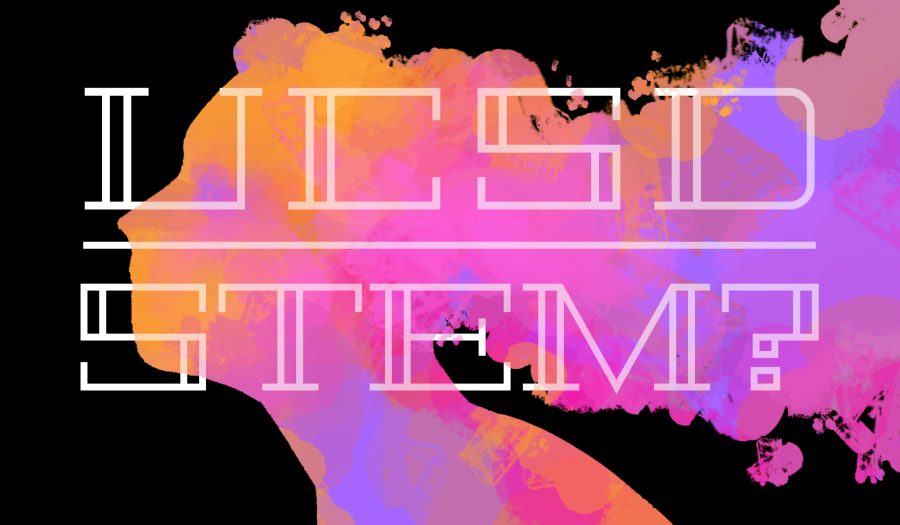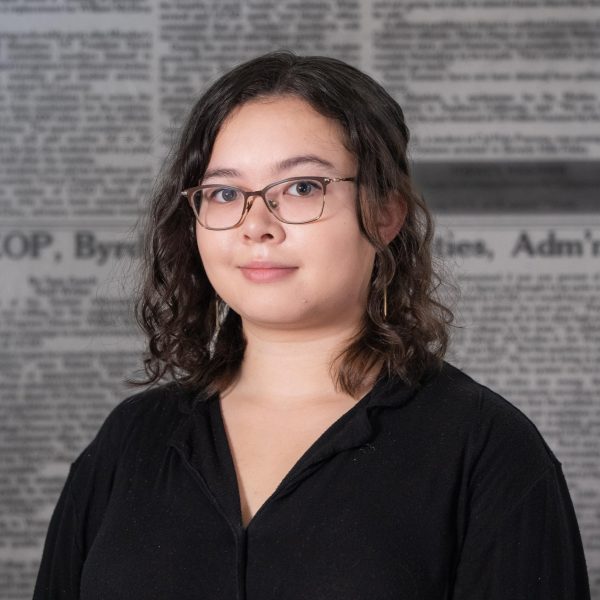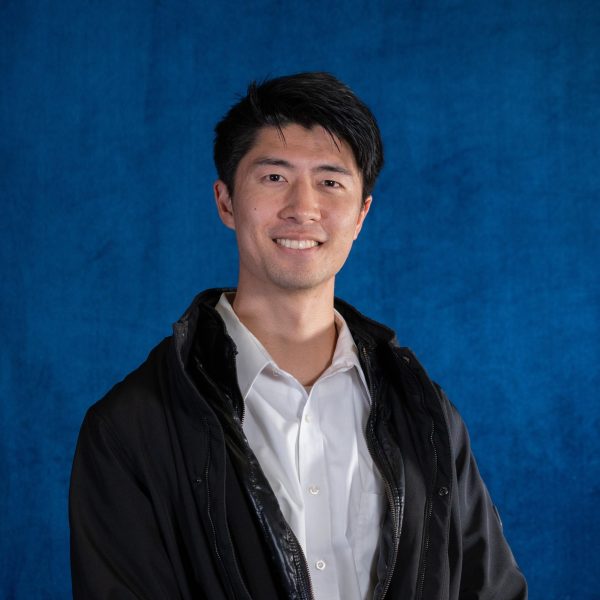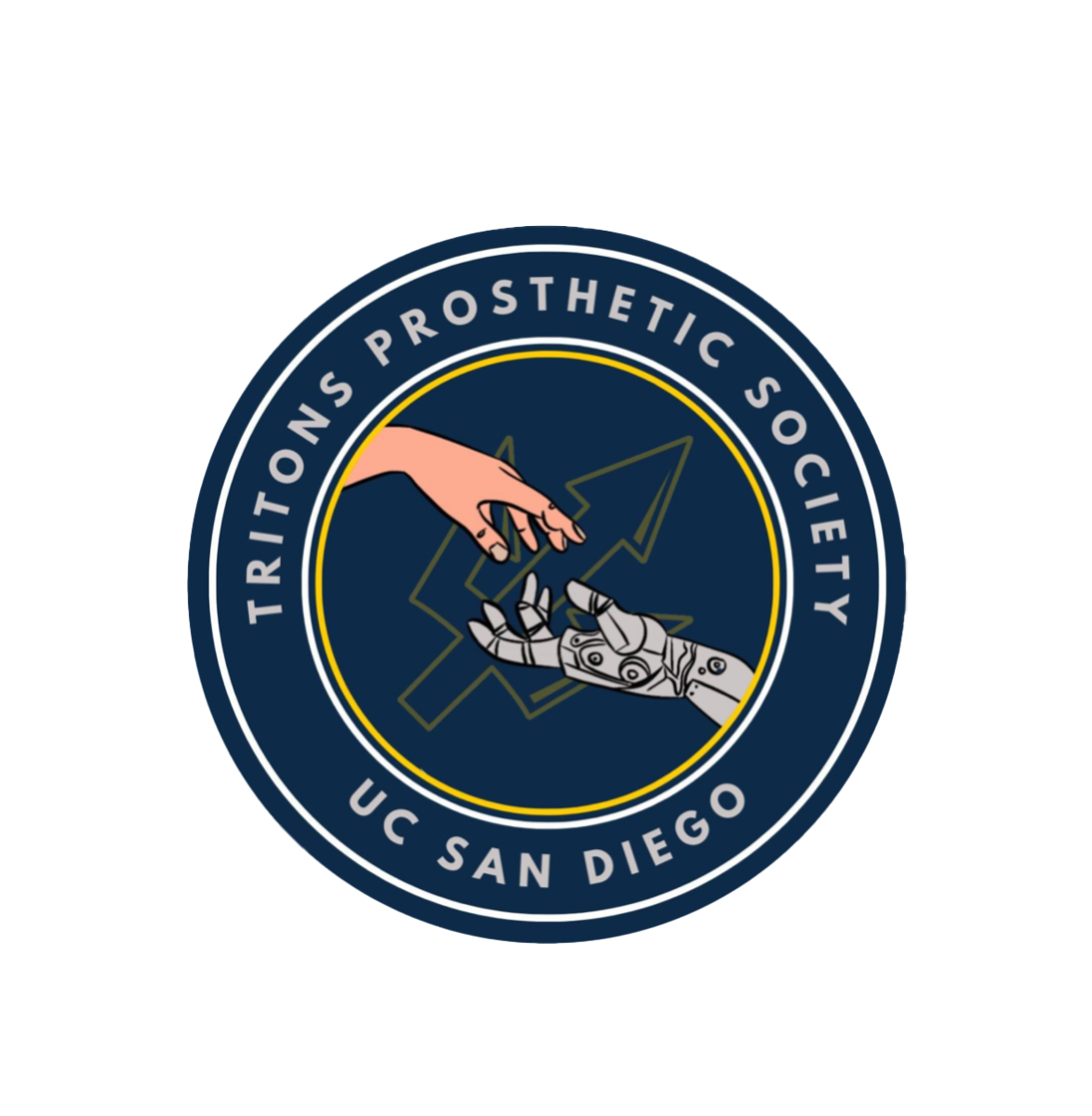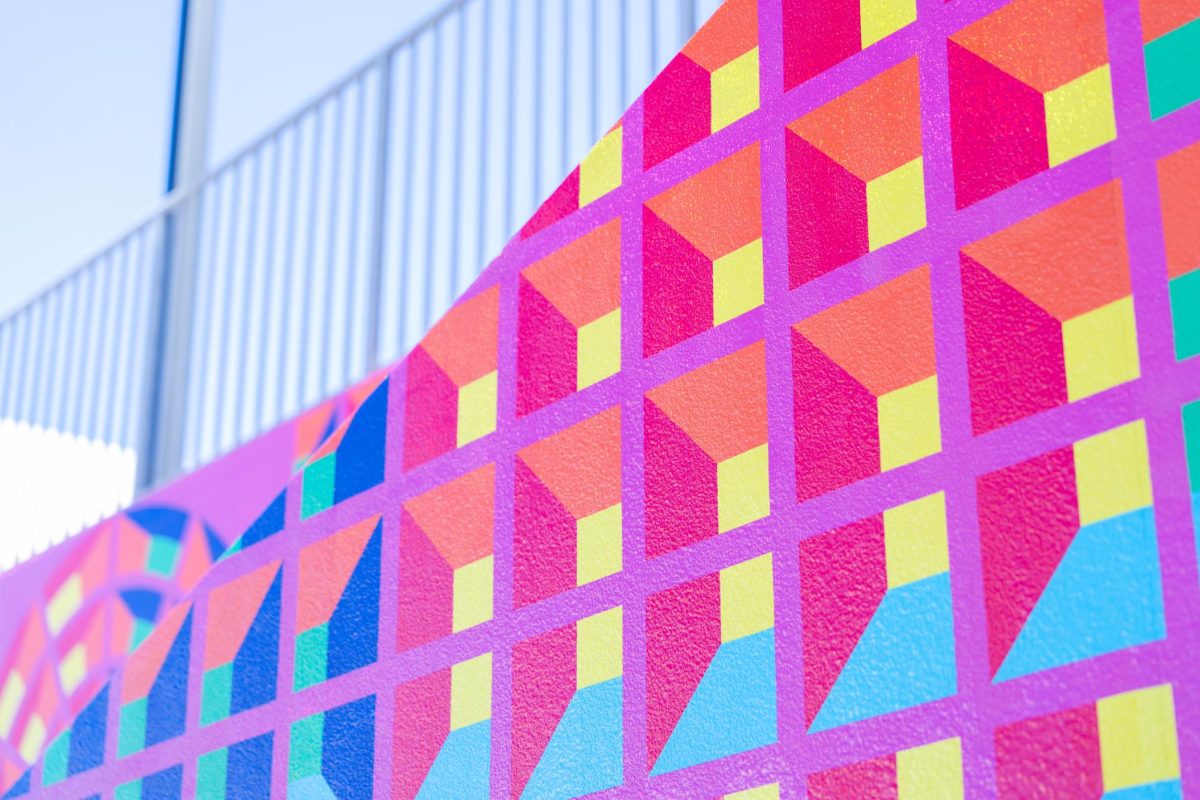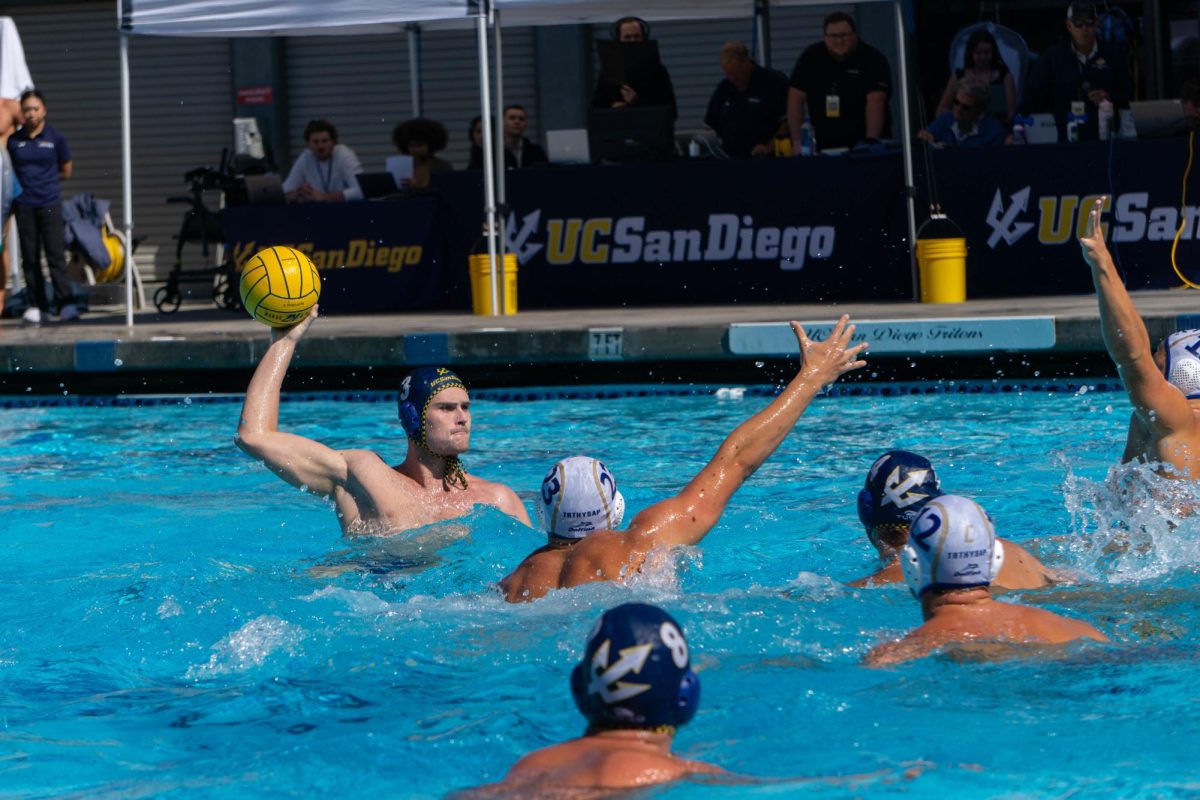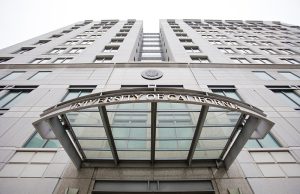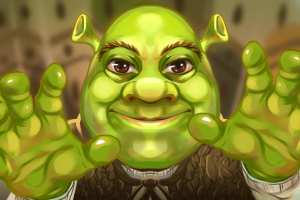The Art of Studying the Arts at UCSD
Photo by Allen Chen/ UCSD Guardian
Mar 12, 2023
Despite UCSD’s reputation as a STEM school, many students still pursue their creative passions here. Miriya Huie checks in with several of these arts students to see how the university provides for them.
UC San Diego is well known for its prowess in STEM education. The Jacobs School of Engineering boasts several top rankings, including the 10th-best engineering school nationwide. Capped majors are filled with science and engineering courses.
However, UCSD’s arts department is highly accomplished as well. US News & World Report ranks its fine arts program at 13th in the U.S., and the Hollywood Reporter praises its theater program as fifth best in the world.
Parsa Farnad, a Revelle College sophomore double majoring in theater and biology, highlights these standings as the primary deciding factor in why he chose to attend UCSD.
“UCSD has one of the best masters theater programs in the world, and it’s also a very strong school academically,” Farnad said. “As someone who wanted to pursue medicine and also be able to have a very strong theater education, those two things popped out.”
Lauren Reyes, a Sixth College sophomore majoring in interdisciplinary computing and the arts, agreed that her faith in UCSD’s academics and post-graduate success was a major selling point.
“I actually have a family friend who attended UCSD and graduated [in] 2016, and she was an ICAM major, and she’s now a software engineer making six figures right out of college,” Reyes said. “So, it was good to know for me that going into art doesn’t mean I’m ‘screwing up my future.’”
UCSD’s catalog offers many diverse art classes, allowing opportunities for students to develop specific skills and explore different methods of artistic expression. However, those offerings may be limited in availability.
“There’s a Chinese calligraphy course,” Reyes told The UCSD Guardian. “That’s really cool, right? But in terms of availability, it’s not offered a lot. There’s a lot of courses that I’ve seen on the ICAM major sheet list that are really cool, but I won’t be able to take them for another few quarters, which is really frustrating.”
Tessa Chan, a Sixth College freshman majoring in Studio Art, seconded this struggle with course enrollment. She described her issues with enrolling in VIS 3, a core lower division class for her major.
“It just went so fast, because everyone who wasn’t an art major was getting it [since] they needed it for their general education requirements,” Chan said.
She hoped that the priority registration system could help her with enrollment, but found out otherwise: “When I went in to talk to the professor, I asked her if I would have any priority registration. She said there was none for visual arts students, even when it was such an essential class for my major.”
This is not the only instance Chan recalled feeling that UCSD’s structure deemphasized arts and humanities classes. Her minor, focusing on literature and writing, requires her to take several workshop classes in which students write original pieces and critique their classmates’ works. However, even the lower-division workshops have a prerequisite: the first-year writing sequence for each college. As a result, many writing students are forced to wait until their second year of enrollment to take the first step into their major classes.
“I think it’s pretty dang stupid that you can’t do any writing workshop classes first year,” Chan commented. “I could have double majored.”
Reyes, too, mentioned a structural issue with her arts enrollment.
“I’m trying to pursue a digital video film production minor, and it’s been difficult this year specifically. Ever since the beginning of this year’s fall quarter, they haven’t been allowing people to apply to this minor because they’re ‘updating the catalog for next year.’”
Reyes noted that without her minor officially declared, she was unable to gain priority enrollment for relevant classes, and would be unable to do so for the rest of the year. The priority enrollment system is often used to reserve seats in particular classes for people of relevant majors or minors; thus, being denied official minor status has impacted Reyes’ enrollment availability.
Chan and Reyes also mentioned that they believed that their classes weren’t practice-based enough for their preferences.
Reyes mentioned that she felt her classes centered heavily around theory and history rather than practice. Similarly, Chan reported a greater conceptual understanding of art while still missing out on hands-on training.
On the other hand, Farnad expressed satisfaction with his classes, which focused anywhere from 50% to 100% on the practice and production of their art form.
“There’s very consistently a focus on you creating something and then having it be critiqued,” Farnad said. “I’ve been very satisfied with what I’ve gotten to experience so far.”
However, though classes may vary in levels of practical experience, the students all agreed on one fact: they build a great community amongst the art majors.
“I was really shocked because, you know, everyone knows UC San Diego, STEM, and research school,” Reyes said. “I didn’t think the art community would be that big here, but most of my friends are actually art majors, of any kind.”
Farnad agreed with this sentiment, saying that he’s found much more of a feeling of community in his art classes as opposed to his STEM classes.
“From my Intro to Acting class, there’s a bunch of us that still hang out sometimes, even though that class was a year ago,” Farnad recalled.
Farnad theorized that the project-based nature of his acting class, rather than the large lecture format, promoted this feeling of community.
Reyes, though, encourages finding art-related opportunities in any organization on campus, whether art related or not.
Reyes is part of the design team for Kaibigang Pilipin, a cultural club on campus. Additionally, she’s participated twice in the UCSD Film Festival, which screens student productions within the categories of documentary, narrative and experimental films.
“I feel like a lot of the art community comes from the art-related jobs in certain clubs,” Reyes said. “Like in [Associated Students]; you see those really fancy graphics, there’s probably a team of art majors behind that.”
Farnad, too, supported finding creative outlets on campus. He found his place as a board member of a capella club Duly Noted and has performed in plays organized by Company 157, a student-run theater production company.
Chan, though, mentioned struggling to find student organizations on campus that she felt would allow her a chance to significantly develop her skills and provide her with experience.
“There’s not a lot of pre-professional ones,” she said. “They’re more casual, social orgs in my opinion.”
Additionally, Chan reports that being an art major may prompt social pressure. Chan mentioned her encounters with “majorism,” a phenomenon where people may assume things about another student based on their declared major.
She explained the pressure she feels to perform in these settings: “You know when you’re just like, ‘oh my god, I’m not just representing me, I’m representing every Studio Art major in their head!’” She laughed and added, “I do think that certain majors garner a lot more respect than others.”
Despite it all, though, when asked, all three interviewees responded positively to their UCSD experience. Chan expressed her love for the school; Farnad said he is consistently satisfied with the education he receives.
Reyes explained that she felt she learned more about film in her high school years than she has at college. Still, she said UCSD had met her expectations and desires.
“I never developed the film skills that I wanted to learn more about,” she said. “I didn’t get that. But I got resources, I got a community out of it, and I feel like to me, right now, that’s the most important thing.”
Photo Courtesy of Allen Chen


